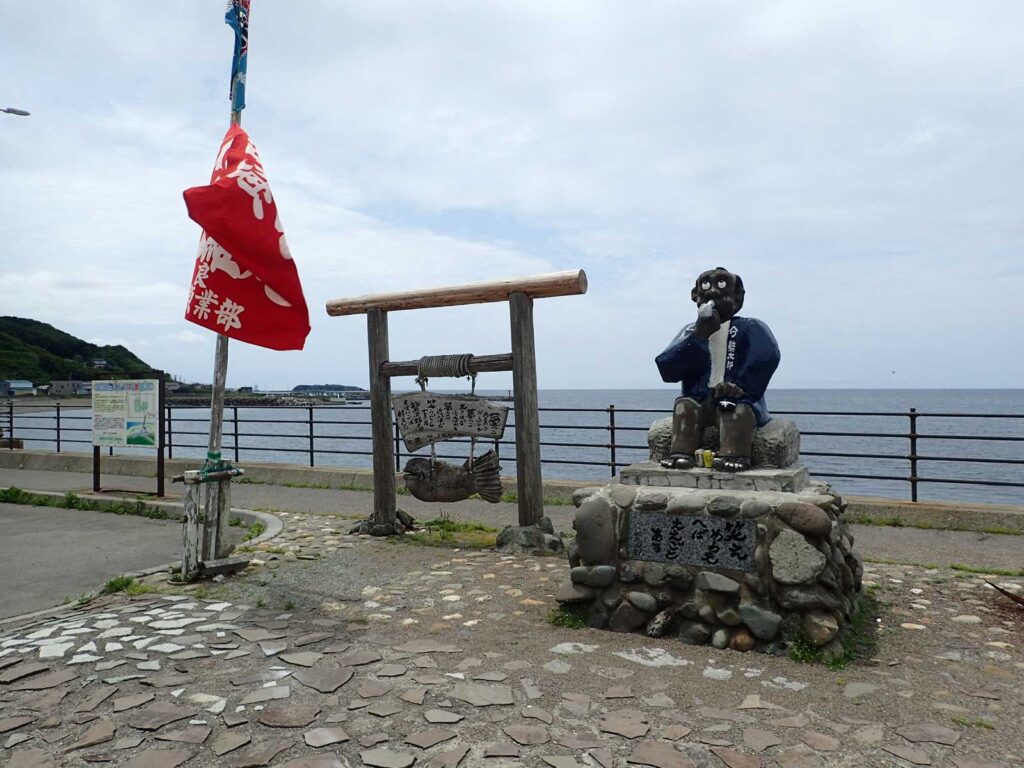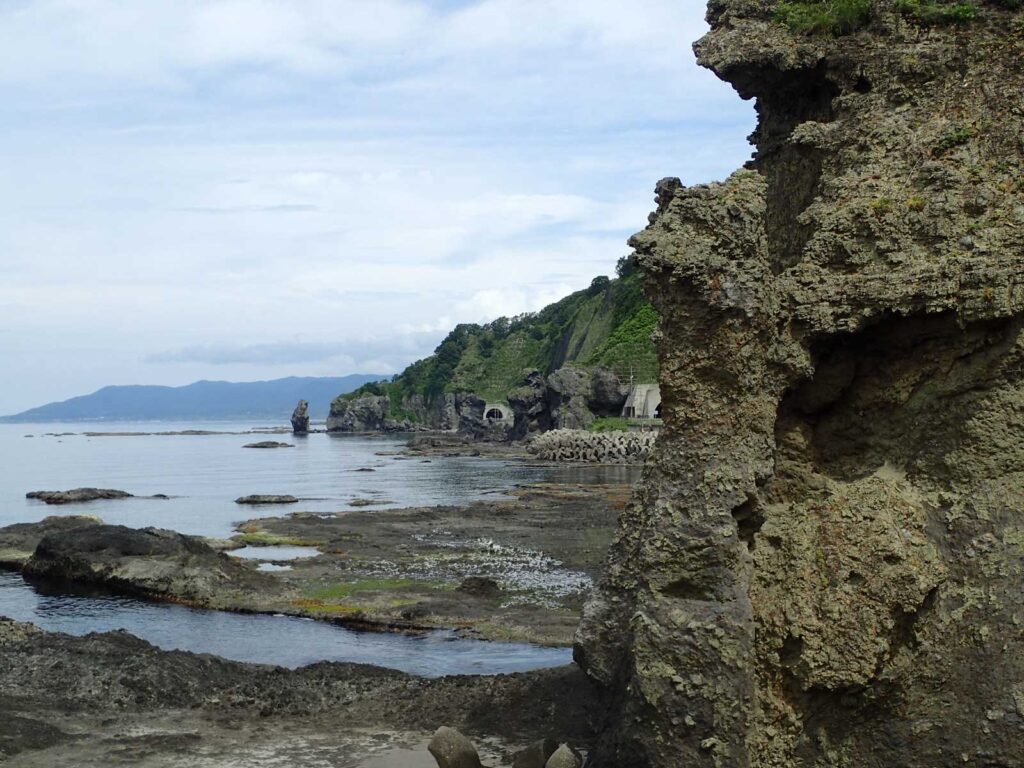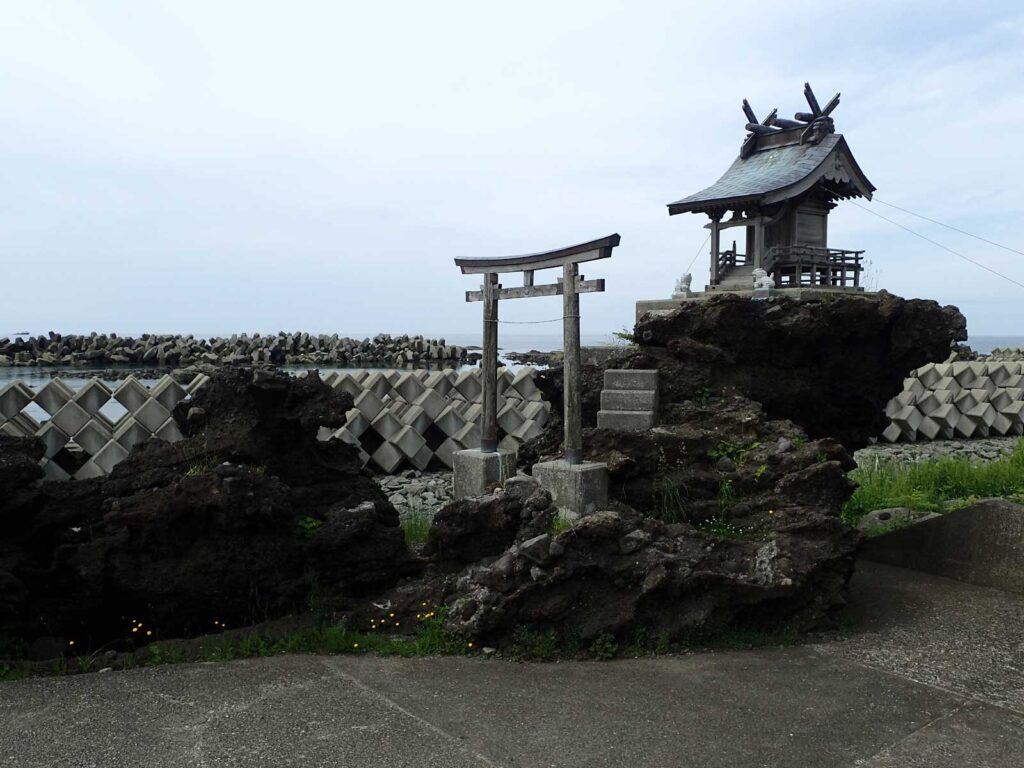Otobe to Pirika
June 16, 2023

For the past day and a half we have been riding along the east and west coast of Hokkaido. Our route began yesterday with a dark and misty ride along the island’s Pacific coast and through a few easy hills and tunnels over to the west coast on the Sea of Japan. Almost as soon as we emerged from the long tunnel that cut through the range separating the two sides of the island the mists lifted and the sky brightened into an almost sunny and definitely warmer day. From there it was downhill all the way to the western coast and some of the flattest riding of the trip. We rode through fishing villages dotted with small marinas and smelling the salted seaweed scented air that seems to be nearly the same in coastal communities around the world. I paused at one marina to take some pictures of a tall ship that seems to be from that transition era when both steam and sails worked side by side on metal hauled craft.
This morning we continued our coasting with a climb to bypass a tunnel that was closed for repairs before we returned to the mostly flat coastal road that only had a few gentle hills to stretch our leg mussels. The shoreline is composed of rugged volcanic rock that centuries of weather and waves have formed into mysterious shapes.
One is known locally as Unseki or the Cloud Shaped Rock in English. There is a shrine at the rock and the local story tells the tale of a battle fought between the indigenous Ainu people who controlled the island of Hokkaido and a Japanese army under the leader Sokechi. The Japanese forces were losing and they had been forced to retreat to the coast in the area of this rock. Suddenly the sky grew dark turning the area as black as night with flashes of lightning and claps of thunder coming from the direction of the cloud shaped rock. The Ainu forces withdrew giving the Japanese time to escape and reform their routed army. Later and under a new leader that army defeated the Ainu. The shrine commemorates this event.
However the story of the Ainu people is not a very happy one. These people are indigenous to the island of Hokkaido and other islands northward all the way to the Kamchatka Peninsula of Alaska. They are closely related to the Aleuts of the Aleutian Islands, as seen in the carving of totem poles by both cultures. After a series of military defeats during the 1600s, they lost territory and influence to the expanding Japanese culture. In 1799 events took a more destructive turn when the shogunate took total control over their homeland. From 1799 to 1806 the shogunate separated Ainu women from their men and husbands, forcing them to marry Japanese men or allowing them to be raped if they refused. The men were moved out of their communities and made to work as slave labor for periods of five to ten years. The result was the decimation of the Ainu population of Hokkaido and the near total assimilation of their people. Today, official estimates of their numbers are put at around 25,000 but could be as high as 200,000. No one knows for sure and most Japanese are unaware of what Ainu ancestry they might have. There is a movement to address this, much as there are movements to address the wrongs done to indigenous people in my home country of Canada as well as in many other countries around the world. It is a dark part of our past that can not be undone but that should be remembered and healed.




